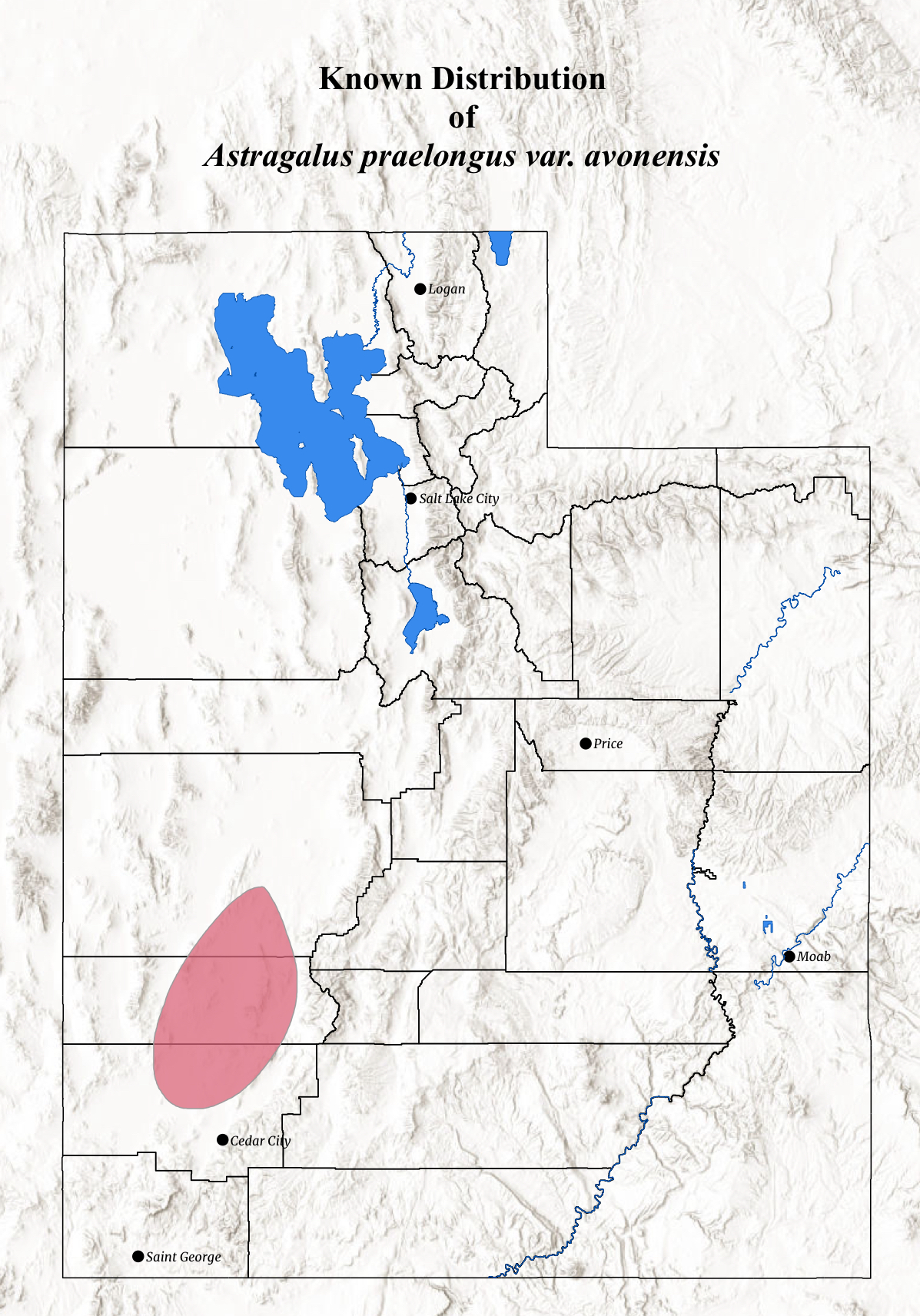≡
Avon Milkvetch
Astragalus praelongus var. avonensis
NatureServe conservation status
Global (G-rank): G4T2
State (S-rank): S2
External links
Phenology
Flowering from April to July.
Species range
Astragalus praelongus var. avonensis is a local endemic to the Utah Great Basin and is found in Iron, Beaver, and Millard counties.
Threats or limiting factors
This variety has been impacted in the installation of a natural gas pipeline. Other threats include disturbances and habitat destruction from ATV use, grazing, and mining activities.









